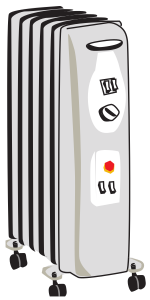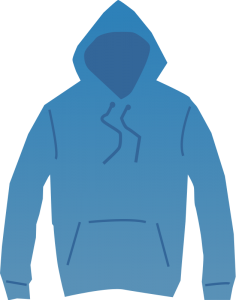No, I don’t mean the eternal bliss of lying on your bed or ‘vegging’ on the sofa during a Netflix session. I’m talking the time when the temperatures drop below what you’re used to.
When it starts feeling chilly, here are some hot tips to help you keep warm in summer/winter (depending on where you are).
Burn Baby Burn

If you’re lucky enough to live somewhere with a certified wood or coal burner or even an open chimney this will help you carry on the age old tradition of fire in a safe manner. Fuel doesn’t come cheap admittedly, but bought together, it’s a natural way for everyone in your household to keep warm. Using fire based products does come with the obvious caution though, especially open ones. Make sure you have the appropriate safeguards in place and there’s a log somewhere to say your burner has been certified safe against smoke and carbon monoxide. Without them…well, is it worth bearing thought?
Crank It Up (The Heat & Your Bills)

If you’re a place with central heating installed, oil filled radiators or electric heaters (or perhaps you’ve bought one), this is probably the more modern approach to warming yourselves that you’re used to…until you realised it costed a fortune! If you’re living in Halls of Residence or a student house where your bills are covered for you, enjoy it whilst it lasts!
For those paying bills, it’s not the end of the world. With moderation and the right models of portable heaters, it is possible to use these devices without breaking the bank.
A trick my father taught me (being an electrician by trade) is to look for the wattage of your heater before you buy. This will provide a key indicator to how much it will cost you to run. On traditional electric meters (and smart meters if you click through the options), electricity is measured in “units”. This unit is equivalent to 1,000 watts of power used over a measured hour or 1kWh. Certain models of heaters will come with different modes with different wattages for each (as an example, the portable heater I have has 3 switch-able elements that use 400 Watts each, totally to 1200W on full power), so learning to conserve it’s use and balancing your power needs to accommodate your appliance will help reduce shocks when you get your electric bill.
Central Heating is a slightly different animal. Being connected to a boiler, this will use both your gas your electric. Depending on your settings your heating will make use of these whilst enabled, or during a set time. If you have a master thermostat in your property, ensure this is set to a temperature you’re all happy with. The higher it goes, the more work your boiler will have to do to heat the system up to that temperature, the longer it stays on and the more of each resource is used.
Either way, use responsibly when you need it, not just because you want it and you’ll save some cash!
In The Hood

One of the most popular solutions people hear when they say they are cold is to wear a jumper (sweater for those outside of the UK). Oddly enough, they’re not wrong, especially when the most famous thing you can get from a university is the jacket or the ‘hoodie’, sometimes the official one, sometimes a sports one, they all will give you the same benefit (I’m currently wearing one from a student organisation or union/guild at the time of writing – not the red one either!). Whilst this clothing does have a bad reputation in the wider community, university hoodies are seen as acceptable in student towns and the hood itself does provide some warmth and comfort when inside.
If hoods aren’t your thing, thick jumpers (sweaters), fleeces and body warmers will also help you to keep warm and maybe mean you can wait a couple more degrees before you have to resort to one of the options above.
Chicken Soup for (More Than) The Soul

A good hot beverage or food like hot soup will also help to keep you warm. Regular drinking of hot beverages will help to raise your internal temperature and in turn warm you up from within. Like most things this should probably be done in moderation, but a cup of tea or coffee, a mug of soup or hot chocolate or, being the season, some mulled wine or cider won’t go astray.
Just don’t have the caffeine before bed! (unless you’re planning an all nighter!)
Duvets & Blankets

(Totally not used this image before!)
If you need some quick relief from the chills, a good thick duvet (10 tog or higher) will usually do the trick. Simply climb in bed with your laptop and continue, or if you prefer to be semi-social, remove from the bed and drape over yourself. Who needs heating when you have an everyday insulator to cover your back – literally!
Conclusion
There are many modern creature comforts out there to help you keep warm, but they all come at a continuous cost to run and maintain, but often some everyday items can help you keep you from shivering during the long cold nights that often will cost you the same as what they did every other day.
